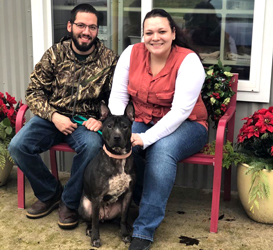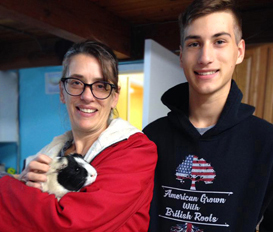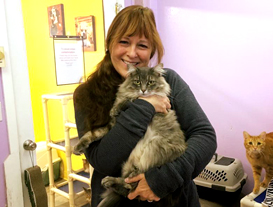OUR ANNUAL SHELTER NUMBERS
we do want to share our 2022 accomplishments with you in our effort to save lives.
At the shelter each day we focus on every individual animal and never our "numbers". It isn't until the year comes to a close that we sit down and see what our Live Release Rate was for the year. Although this is a very important number that many people wish to know, it is often not fully understood by the public, and it also shouldn't be a shelter's sole focus. Each year we fight very hard for imperfect and/or ailing animals that find themselves at our shelter. Thanks to the hard working staff, volunteers, veterinarians, foster homes, and partner organizations our annual life release numbers are truly amazing - especially considering the very small size of our shelter facility and the number of special cases we take in each year. |
494 animals came through our shelter in 2022 |
| INTAKE DETAIL | |||
| Strays (Impounds via Sheriff) | 16 | (16 dogs) |
|
| Strays (brought in via citizen) | 198 | (59 dogs, 138 cats, 1 rabbit) |
|
| Owner Surrenders | 170 | (54 dogs, 110 cats, 6 rabbits) |
|
| Returned Adoptions | 15 | (9 dogs, 6 cats) |
|
| Transfer in (from local shelters) | 95 | (42 dogs, 53 cats) |
|
| OUTCOME DETAIL | |||
| Adopted | 401 | (112 dogs, 283 cats, 6 rabbits)
|
|
| Reclaimed to Owner | 51 | (48 dogs, 11 cats) |
|
| Died | 6 | (6 cats - usually struggling underage kittens) |
|
| Euthanized* | 8 | (2 dogs, 6 cats) |
|
| Transfer Out | 7 | (6 dogs, 1 cat) |
|
LIVE RELEASE RATE: 98.5% |
Live Release Rate formula is percent of Live Outcomes to Total Outcomes. Nationally recognized standard is any shelter that saves above 90% of animals is indicative that the shelter is doing everything they can to save all healthy and treatable animals that come into their care. |
||
Dogs 99.9% |
Cats 97.1% |
||
* CASA does not euthanize for space, convenience, or treatable illness and injury. Euthanasia is truly a last resort.
** DOA: Deceased on arrival. 6 taken in for 2022 (6 cats).









